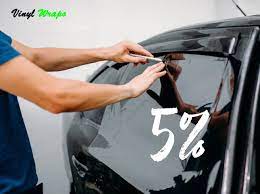
Window tinting is not just about aesthetics; it’s a practical https://www.brooklynwindowtinting.com enhancement that can elevate your driving experience. Whether you’re looking to upgrade your vehicle’s style, reduce glare, protect your interior, or enhance privacy, window tinting offers a multitude of benefits. In this comprehensive guide, we’ll delve into everything you need to know about window tinting, from its advantages and types to installation and maintenance tips.
Understanding Window Tinting:
Window tinting involves applying a thin film to the interior or exterior of vehicle windows. This film is typically made of polyester and comes in various shades and levels of opacity. The tinting process offers several benefits:
- Heat Reduction: Tinted windows can significantly reduce heat buildup inside the vehicle, enhancing comfort, especially during hot summer months.
- UV Protection: High-quality window films block harmful UV rays, protecting occupants from sunburn and reducing the risk of interior fading and deterioration.
- Glare Reduction: Tinted windows minimize glare from sunlight and headlights, improving visibility and reducing eye strain while driving.
- Privacy Enhancement: By reducing visibility into the vehicle, window tinting enhances privacy for occupants and protects personal belongings from prying eyes.
- Safety and Security: In the event of an accident, tinted windows can prevent shattered glass from scattering, reducing the risk of injuries. Additionally, they act as a deterrent against smash-and-grab thefts.
Types of Window Tint:
Window tinting films come in various types, each offering unique features and characteristics:
- Dyed Film: Dyed window tinting is the most affordable option and offers good heat and glare reduction. However, it may fade over time and is less effective at blocking UV rays compared to other types.
- Metalized Film: Metalized window tinting contains tiny metallic particles that reflect heat and UV rays. It provides excellent heat rejection and durability but may interfere with electronic signals such as GPS and cell phone reception.
- Carbon Film: Carbon window tinting is known for its sleek appearance and superior heat rejection. It doesn’t contain metal, making it safe for electronic devices, and offers excellent UV protection and longevity.
- Ceramic Film: Ceramic window tinting is the premium choice, offering the highest heat rejection, UV protection, and clarity. It’s non-metallic and non-conductive, ensuring optimal performance without interfering with electronic signals.
Installation and Maintenance:
While some DIY kits are available, professional installation is recommended for optimal results and warranty coverage. Here are some tips for maintaining your tinted windows:
- Avoid rolling down newly tinted windows for at least a few days to allow the film to fully adhere.
- Clean tinted windows with a mild, non-ammonia-based cleaner and a soft cloth to avoid scratching the film.
- Avoid using abrasive materials or harsh chemicals that may damage the tint.
- Regularly inspect the tint for signs of peeling, bubbling, or discoloration, and seek professional repair if necessary.
Conclusion:
Window tinting offers a range of benefits, from improving comfort and safety to enhancing style and privacy. By understanding the different types of tinting films and their advantages, you can make an informed decision to enhance your driving experience. Whether you’re looking to beat the heat, protect your vehicle’s interior, or add a touch of personalization, window tinting is a versatile solution that delivers both practical and aesthetic benefits.
